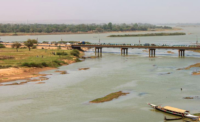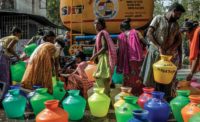World Bank Report on Global Water Scarcity Paints Stark Future
Water scarcity stemming from the effects of climate change and population growth could spur large-scale migrations, spark conflict and cost some regions up to 6% of their gross domestic product, according to a new report from the World Bank.
The May 3 report sees a place for more water-storage infrastructure, such as dams; water recycling and reuse; and, where viable, desalination in many parts of the world that, in the coming years, will face potential shortages of water due to climate change, swelling populations and economic growth. But the report notes that, when proper safeguards are not put in place to manage use, these tools should be used with caution as “demand rises to meet the new level of supply.”
Other tools, such as groundwater recharge and wetlands preservation, “may offer lower risk, lower costs and higher returns than other policy approaches.”
Smarter water policies are needed because water is expected to become scarce in regions where, today, it is abundant, such as Central Africa and East Asia, and scarcity will worsen in regions where it is already in short supply, such as the Middle East and the Sahel in Africa. These regions could see their GDPs decline by as much as 6% by 2050 due to water-related impacts on agriculture, health and incomes, experts explain.
World Bank President Jim Yong Kim said in a statement, “If countries do not take action to better manage water resources, our analysis shows that some regions with large populations could be living with long periods of negative economic growth.”
However, he added that the negative impact of climate change on water resources could be neutralized with better policy decisions.



